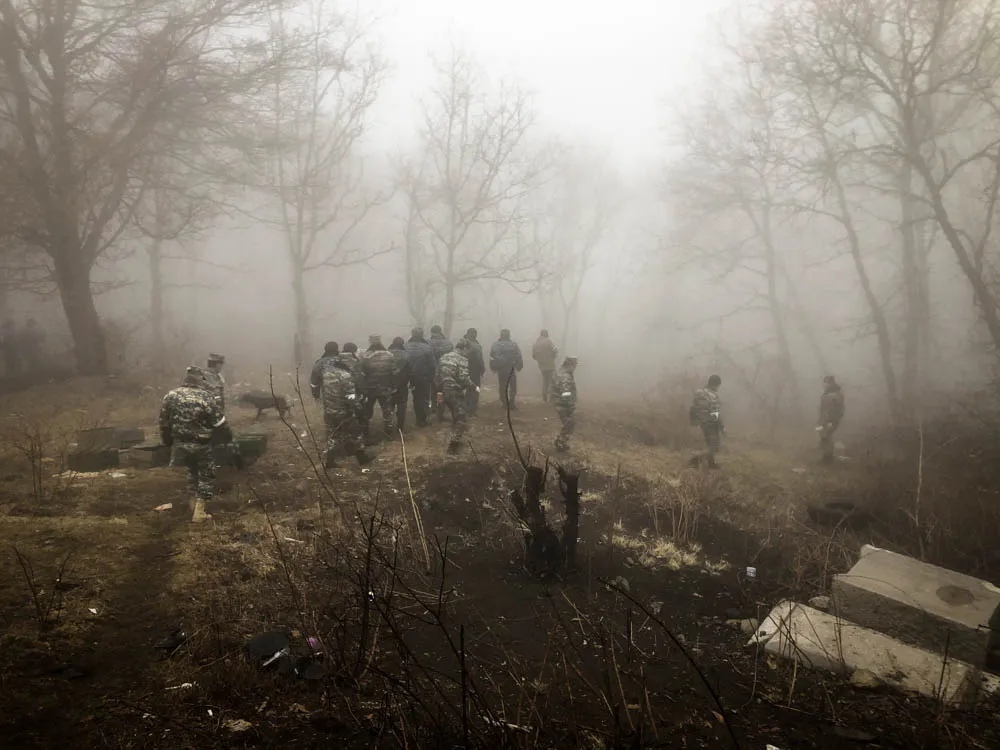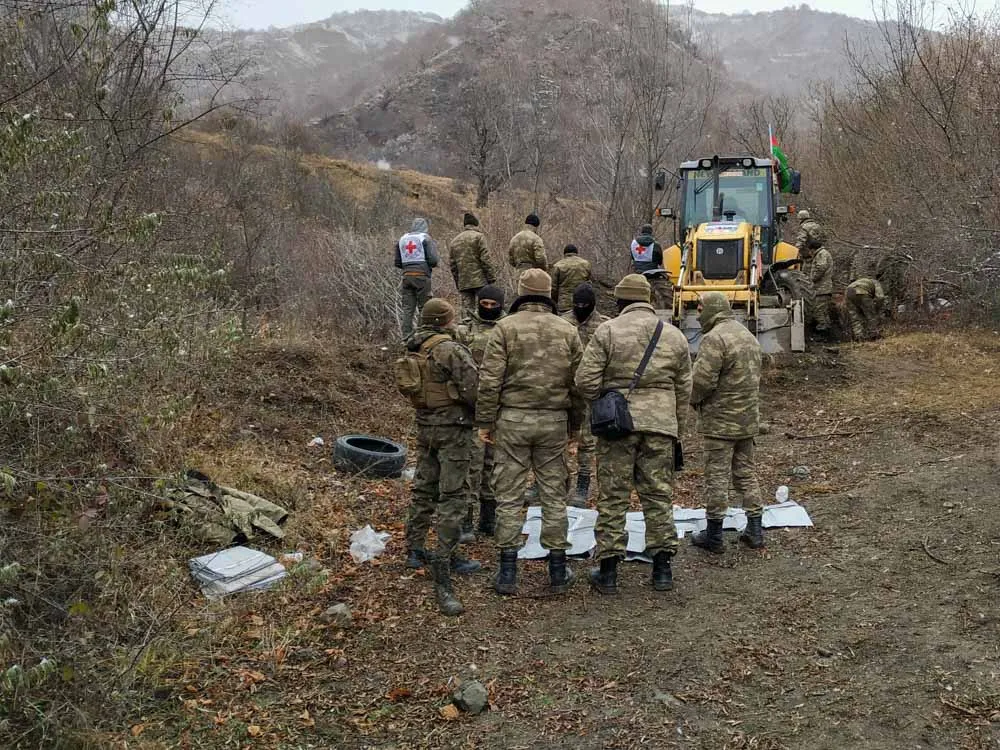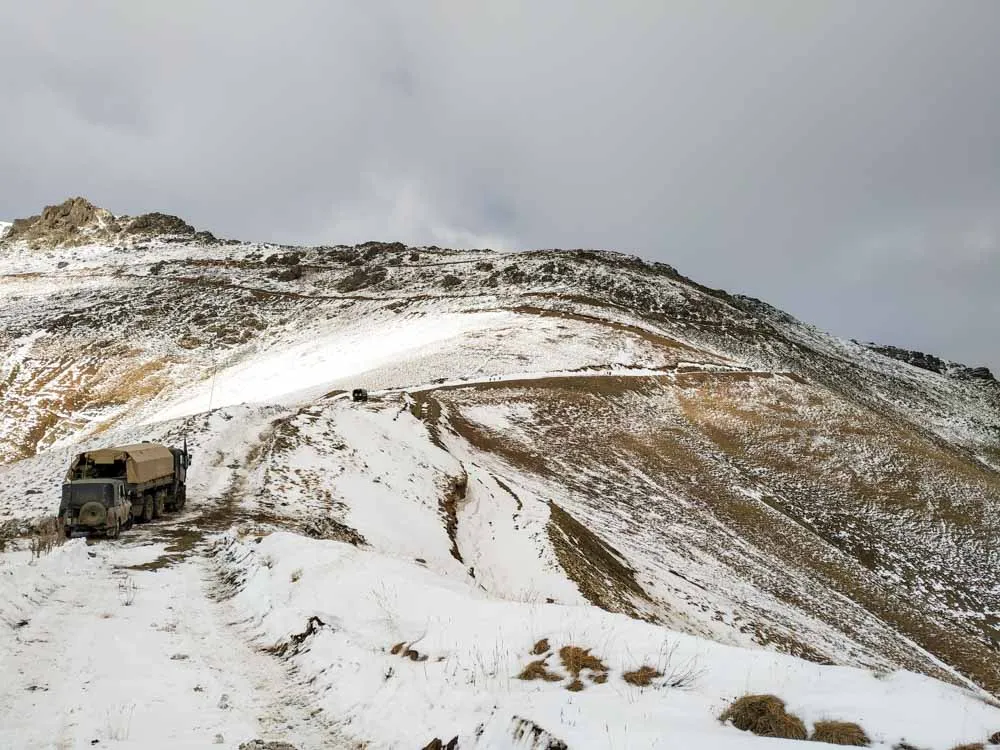Nagorno-Karabakh conflict: finding common ground in respect of the dead

"Would you believe me if I said that I feel jealous when I see parents visiting the graves of their sons? I keep asking myself: 'don't I deserve even this?'"
Ashot's* son fought in last year's escalation of the Nagorno-Karabakh conflict. He is presumed dead, but Ashot is yet to receive his body.
"I can't describe how terrible it is to live like this," he said. "All I want is a place to go and talk to my son and mourn."
For any parent, the loss of a child is extraordinarily painful. But to lose a loved one without knowing where or how they died, without receiving their mortal remains, brings additional pain.
Yet this is the fate that has befallen hundreds of families across the region.
"My son was engaged, the wedding was planned for October, but he went missing," said Ahmad*, another father searching for answers after his son went missing in action.
"To this day, we have no news, not even a body to cry over. My son's fiancée has promised to visit his grave in a wedding dress, if his remains are ever to be found."

An escalation in the conflict caused widespread devastation - ©ICRC
Six weeks of intense hostilities from the end of September caused widespread devastation and left civilians across the region in dire conditions.
The guns fell silent in mid-November when a ceasefire came into effect.
While many will associate the ICRC with providing humanitarian aid to people affected by conflict, the organization's work around building respect for the dead is perhaps less well known, but no less important.
At the heart of such work is collaboration and cooperation. Finding common ground is the only way families can get the answers they need.
Retrieving and identifying remains
International humanitarian law requires that the remains of those who have died during an armed conflict be handled with dignity and respect.
Across the world, the ICRC promotes the dignified treatment of the dead, strengthens local forensic expertise, and works as a neutral intermediary to facilitate the return of human remains to families across frontlines.
"Not knowing the fate and whereabouts of a loved one is deeply traumatic. Many families will not believe their loved one has died until they have their remains. This is an important step in the mourning process," said Jane Taylor, ICRC regional forensics manager for Eurasia.
"Retrieving human remains, identifying the victims and repatriating the remains is a very complex and time-consuming process. There's a lot of pressure and there is no margin for error."

Collaboration is needed in order to carry out retrieval missions – ©ICRC
The process starts at the outset of hostilities. ICRC teams ensure that the parties to a conflict understand their obligations towards the dead and encourage them to work together to facilitate the retrieval and identification of the deceased.
In a conflict zone where control over territory is changing hands, landmines and munitions litter the landscape, and emotions are running high, this is easier said than done.
The actual job of collecting human remains is carried out by the relevant authorities. The ICRC's role is to facilitate operations, as a neutral intermediary, so they can progress as smoothly as possible.
To date, the ICRC has been involved in more than 170 retrieval missions in relation to last year's escalation of the Nagorno-Karabakh conflict. More than 1,600 bodies have been recovered since the ceasefire, according to authorities.
When collecting the deceased from the battlefield, all information is vital to improve the chances of identification. The GPS location of where remains are found should be recorded so it can be cross-matched by authorities with military data.
Human remains should be placed in separate body bags along with any clothes or personal possessions that may help in the identification process.
"You can't overstate the importance of the possessions to families," said Taylor.
"Objects belonging to loved ones, like a watch, can evoke strong emotions and help families come to terms with their loss."
Families are central to the process. At the outset, they provide personal details about missing loved ones. Later on, if necessary, they may be asked for a DNA sample.
But this is not a simple box-ticking exercise. Interviews with families are carried out by trained personnel in order to provide as much reassurance and support to the families as possible.
The family's religious beliefs also have to be taken into account as different faiths may have their own cultural practices when it comes to handling the dead.

To date, the ICRC has been involved in more than 170 retrieval missions – ©ICRC
All the evidence gathered from the retrieval phase, combined with the information from the autopsy which can include a DNA profile, is used to build a hypothesis for an identification.
"Visual identification alone is never enough as your physical appearance actually changes when you're deceased and it can be a traumatic experience for whoever identifies the body," explained Taylor.
Where remains are fragmented or mixed with other individuals, the identification process is more difficult and may involve specialist DNA, dental or anthropology examinations.
This function is normally carried out by the relevant authorities. Where expertise is lacking, the ICRC can support the process by sharing its own expertise.
ICRC geneticists from the forensic team, based in Tbilisi, are currently supporting capacity building efforts across the region.
"Our ultimate aim is to help identify the remains. All forensic specialists, ICRC or not, see it as a personal failure when we don't succeed," said Taylor.
"But you have to accept that there are going to be some situations where the bodies of missing people are never found or the remains can't be identified. That is incredibly sad."
This outcome has historic precedent in the region. Some 4,500 people are registered as missing with the ICRC from the Nagorno-Karabakh conflict in the early 1990s.
Despite the passing of time, the ICRC continues to work with authorities to clarify their fate.
Landmines and courage
In areas that witnessed heavy fighting last year, the terrain is littered with landmines and unexploded or abandoned munitions.
Safety considerations when carrying out retrieval missions are paramount.

Landmines and munitions litter the landscape – ©ICRC
"Anti-personnel mines, loaded weapons, grenades, RPGs, mortar bombs, anti-tank missiles, long-range rockets... there is contamination everywhere," said Chris Poole, an ICRC weapons expert.
"Inevitably the remains that are being retrieved are located in places where the fighting had taken place, so we have to contend with a really dangerous landscape.
"In the beginning of the retrieval operations, tensions were high, not only due to weapon contamination, but because you had people from opposing forces working together.
"But there was a genuine view that it was a job that had to be done. There was a lot of moral courage from everyone involved."

Challenging conditions in the mountainous northern region – ©ICRC
De-mining teams have to clear roads and paths before retrieval missions can be carried out. Several tragic incidents serve as a reminder of the inherent dangers.
In the mountainous northern region, the freezing temperatures and snow posed another problem.
"The routes were just about accessible," said Poole, "but the journeys were very long, slow and treacherous.
"In some places, thick snow covered human remains, making it difficult, if not impossible, to find and recover them."
Finding common ground
It is now five months since the ceasefire came into effect. Hundreds remain missing and the humanitarian needs across the region are significant.
The search for those missing goes on while work to identify human remains in the morgues also continues.
"Together with the authorities, we have combed through the areas that we could reach," said Martin Schüepp, ICRC regional director for Eurasia.
"Some places weren't accessible during the winter months, so with spring arriving there may be more opportunities.
"Together, we will keep trying until we've exhausted every possibility, but the truth is that it will be very difficult after so many months have passed."
Schüepp also acknowledged the collaboration of the parties involved, including Russian peacekeeping forces.
"What I found striking on my last visit was how the Armenians and the Azerbaijanis were working side-by-side looking for their fallen comrades," he said.
"You could see how emotional it was for the soldiers, but they were supporting each other. It was quite unique and something that we rarely see.
"It shows that even in times of war, adversaries can find common ground around humanitarian issues."
*Name changed
For further reading, see also:
- Living with Absence: Helping the Families of the Missing, Dec 2018.
- Accompanying the Families of Missing Persons: A Practical Handbook, Mar 2013.
- Tackling Weapon Contamination, Feb 2017.
- Weapon Contamination, Jan 2010.



